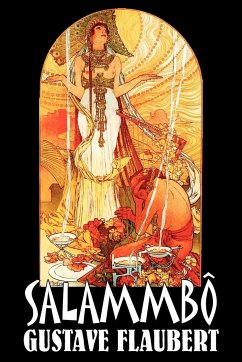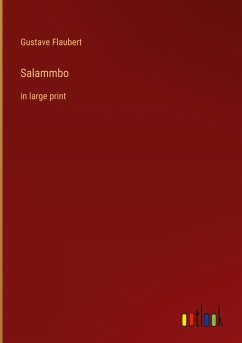
Salammbo
Versandkostenfrei!
Versandfertig in 1-2 Wochen
18,99 €
inkl. MwSt.

PAYBACK Punkte
9 °P sammeln!
Salammbo (1862) is a historical novel by Gustave Flaubert. It is set in Carthage during the 3rd century BC, immediately before and during the Mercenary Revolt which took place shortly after the First Punic War. Flaubert's main source was Book I of Polybius's Histories. The novel jumpstarted a renewed interest in the history of the Roman Republic's conflict with the North African Phoenician colony of Carthage. Contemporary readers familiar with Flaubert's previous realistic work, Madame Bovary, were shocked and in some instances appalled by the indiscriminate violence and sensuality prevalent t...
Salammbo (1862) is a historical novel by Gustave Flaubert. It is set in Carthage during the 3rd century BC, immediately before and during the Mercenary Revolt which took place shortly after the First Punic War. Flaubert's main source was Book I of Polybius's Histories. The novel jumpstarted a renewed interest in the history of the Roman Republic's conflict with the North African Phoenician colony of Carthage. Contemporary readers familiar with Flaubert's previous realistic work, Madame Bovary, were shocked and in some instances appalled by the indiscriminate violence and sensuality prevalent throughout the novel, which is why, notwithstanding the praise it received for its style and story, Salammbô remains controversial in literary circles to this day. Nevertheless, it was a massive best-seller, sealing the author's reputation as one of the most prominent French writers of the 19th century. It was even said that Flaubert's descriptions of Carthaginian costume influenced contemporary fashions. Since then, however, the novel has fallen into obscurity in much of the Anglophone world. (wikipedia.org)












